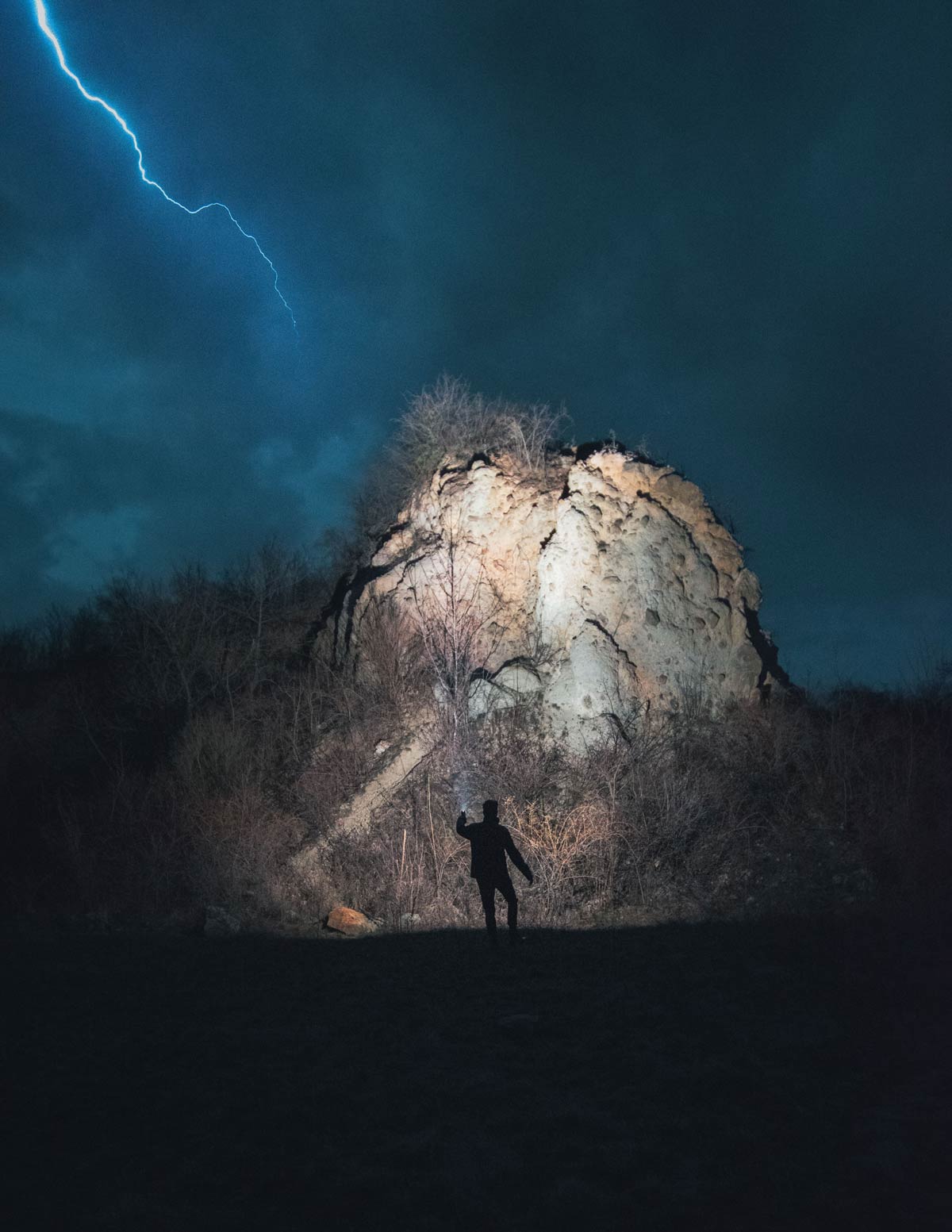
Backcountry Storm Safety: How to Minimize Risk and Stay Safe Outdoors
If you’re an avid hiker, you know thunderstorms can pop up without too much warning. And you also know how scary it can be.
While the noise of thunder overhead can be spooky on its own, it’s lightning that can actually cause harm. The odds of getting fatally struck by lightning are slim — there are typically only 20 lightning deaths per year in the U.S. — but you should still know how to stay safe when you get caught in a storm outdoors.
Continue reading for tips to help you minimize risk and stay safe outside during a storm.
Start With Prevention

Like any outdoor risk, staying safe starts with prevention. That means doing your best to avoid being in the middle of a storm without a safe shelter. Anytime you’re planning a hike, do a little prep work to make sure you’re not hiking into stormy weather. Here are some tips to get started:
- Know what’s common: Different areas of the country experience different storm patterns. For instance, hikers in the Rocky Mountains know to expect afternoon thunderstorms daily in the summer. Consult online forums, locals, rangers, and guidebooks to find out what’s common wherever you’re hiking. Knowing this info can help you when choosing a trail and deciding what time to hike.
- Check the forecast: While it’s smart to understand typical weather patterns, you should always check the forecast before heading out on a hike. You never know when unusual weather patterns will bring abnormal weather, but ideally, meteorologists do. If you’re hiking in the mountains, mountainweather.com offers good mountain-specific forecasts for certain areas of the country.
- Consider your route: Even if the forecast looks clear, it’s wise to think through your route and how much protection it offers during a storm. So consider the trail: Does it include any exposed ridges or peaks? Does it provide decent visibility of incoming weather? Are there any (enclosed) shelters for taking cover if needed? If you don’t know the route, you may need to consult locals, rangers, or guidebooks to find out.
Stay Alert While You Hike

If the weather looks sketchy, save your hike for another day. But if you’re on a multi-day trip, you may not have the choice to postpone your time outdoors. And even if the predictions show perfect weather, forecasts can be wrong. In short, it’s smart to always stay alert and aware of potential bad weather on the trail. These tips can help:
- Know which direction weather typically comes from: Generally in the U.S., winds and weather move from west to east. But certain areas of the country may experience unique local weather patterns. This is good information to know because it’ll help you understand which direction bad weather may come from.
- Keep an eye on the sky: Depending on the trail, you may not always have a good view of the sky. But whenever you have a good vantage point, be sure to keep an eye out for incoming weather systems. Cumulonimbus clouds — which rise vertically, can have a smoky look, and may flatten out on top — can signal an impending storm.
- Listen for thunder: Even if you can’t see an incoming storm, you might be able to hear it. Take any sounds of thunder seriously — if you hear it, start heading back to shelter or to a safer location right away.
Take Precautions on the Trail

As much as you can try to avoid storms, getting caught in one is inevitable if you spend enough time outside. Be ready by knowing how to stay safe when you experience a storm on the trail.
- Take shelter: Use your best judgment when it comes to seeking shelter. If a storm’s approaching and you’re still close to the trailhead, it may be worth heading for your car if you can get there in time. But if you’re miles into the backcountry, it’s better to find someplace to take shelter nearby.
- Avoid tall, solitary objects: Lone trees, flagpoles, or any tall, isolated objects are prime targets for lightning, so avoid them when you’re out in a storm.
- Stay away from water: Impure water (that is, water found in nature) conducts electricity and is dangerous in a storm. Stay away from lakes, rivers, and even puddles.
- Descend from exposed peaks: High, exposed terrain is a bad place to be in a storm. Stay off peaks and ridges and head for lower ground.
- Shelter in a stand of uniform trees: Lower areas, like gullies, are best — as long as they aren’t filled with water. If there aren’t any trees nearby, it’s still best to find the lowest ground possible.
- Get in lightning position: Squat — but don’t lay down — at least 25 feet from your hiking partners. Insulate yourself from the ground with a backpack or sleeping pad.
- Wait 30 minutes: Don’t move away from shelter until 30 minutes have passed since you last heard thunder.
Stay Safe From Storms in the Backcountry

While the chance of serious injury from lightning is low, knowing how to stay safe in a storm can lower those odds even more. If you spend a lot of time in the mountains — especially for extended periods of time — it’s worth consulting additional resources about storm safety in the backcountry. Check out material from the National Oceanic and Atmospheric Administration (NOAA) and the National Outdoor Leadership School.
If you want more tips about staying safe on the trail, subscribe to our email list. In addition to blogs like these, we’ll also keep you updated with the latest Cloudline deals.




